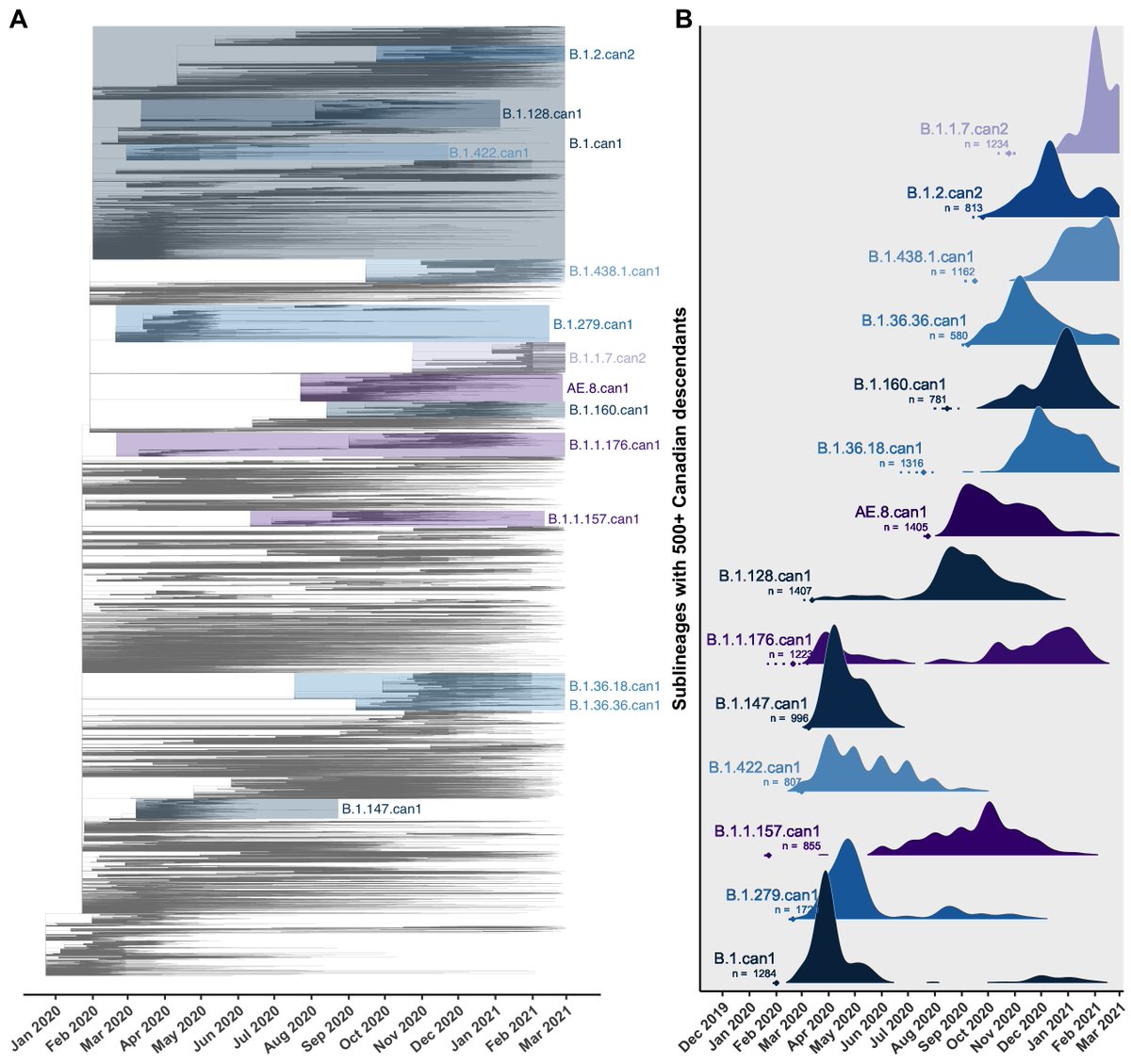
We are elated to share our paper in eLife on the genomic epidemiology of the first and second waves of SARS-CoV-2 in Canada elifesciences.org/articles/73896 . Shout out to co-authors, Vince, Rachel, @gidmord, #CanCOGen consortium, @MichaelWorobey, @art_poon, and @Greenbeard2. 1/9
@gidmord @MichaelWorobey @art_poon @Greenbeard2 Firstly, we are grateful to the Canadian Public Health Laboratory Network (CPHLN) and global labs that generated and shared SARS-CoV-2 sequences to the public domain on @GISAID, which have enabled this study and many others. 2/9
While the first two waves seem like a lifetime ago, looking back at how effective travel restrictions were at reducing viral introductions helps inform policy for the ongoing Omicron waves, variants to come, and future novel pathogens. 3/9
Canadian COVID-19 restrictions on non-essential international travel implemented in March 2020 were effective in reducing the flow of viral importations ~3-fold in two weeks and ~10-fold within four weeks. 4/9 

The largest sublineages in the first wave were introduced prior to travel restrictions and other public health measures, suggesting that a more rapid response may have averted more first wave COVID burden. 5/9
Despite the reduction in importations, a trickle of new sublineages were seeded throughout summer 2020 that replaced the earliest sublineages, despite being within similarly transmissible ‘wild type’ viral lineages. 6/9 

Fall and winter 2020 brought multiple introductions of variants of concern, Alpha (B.1.1.7), Gamma (P.1), and Beta (B.1.351), which outcompeted circulating wild type sublineages towards the end of the second wave in March 2021. 7/9 

Travel restrictions are an effective way to reduce viral importations when implemented rapidly, but have diminishing returns if domestic prevalence of similar lineages is high or if there are too many individuals exempt from restrictions without access to rapid testing. 8/9
Additional thanks to our funding sources @CIHR_IRSC, @NSERC_CRSNG, @GenomeCanada, @GenomeBC, @GovCanHealth, @bccfe, and @PHCResearch. 9/9
• • •
Missing some Tweet in this thread? You can try to
force a refresh



